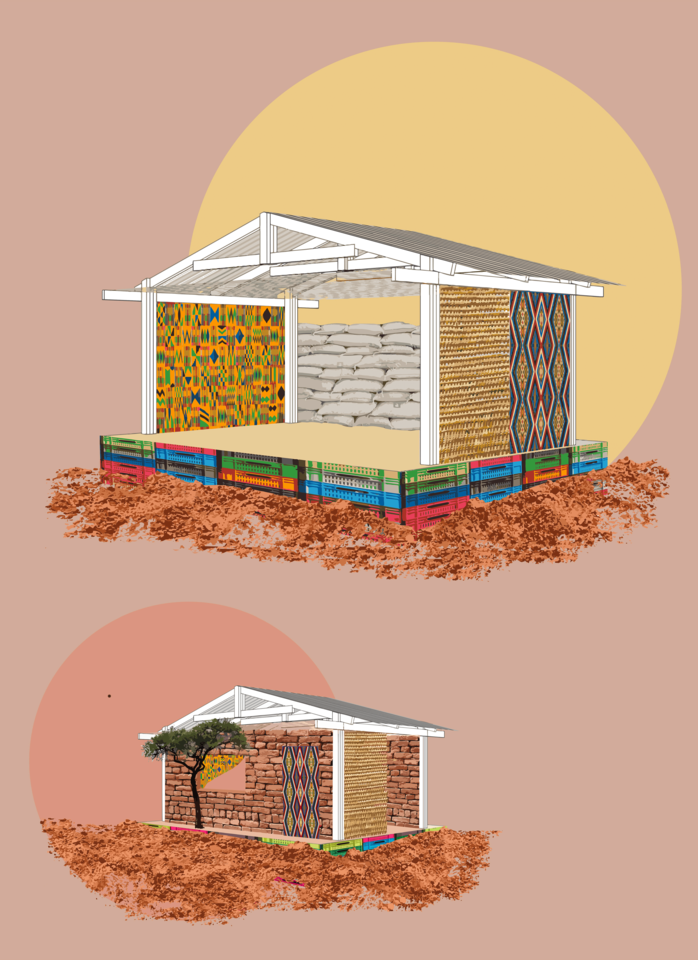Places people should want to go to
The treatment of infectious diseases such as COVID-19 and Ebola is challenging, especially on location under extreme conditions. How can you use architectural design to make such clinics both technically possible and approachable? In collaboration with Médecins Sans Frontières, students of the master track Building Technology set to work on that question.
If you make a design under extreme circumstances, nothing is self-evident. Building in Antarctica, in the tropics, or in areas with a lot of hurricanes and earthquakes creates its own challenges. In the Extreme course of the master track Building Technology, students are challenged to make a suitable design for such extreme conditions. This year the students went to work for Médecins Sans Frontières (MSF). Because how do you build a clinic for an almost invisible extreme circumstance: infectious viruses?
MSF provides emergency medical assistance. In practice, this means that clinics often have to be built quickly, with local conditions unknown in advance. This was also the case in Congo, where MSF set up clinics for the treatment of Ebola patients. Engineer Nick Schreiner worked on location in Congo for MSF and outlines the conditions that the students had to take into account: “The locations in Congo where we were operating were remote or in very dense urban areas, in a tropical climate, in active conflict zones. That means you are dealing with insecure contexts and a lot of questions. How do you get materials? What do you bring in from afar and what do you procure locally? How can you maximise the potential of the structures you build in a small area?” In addition, the clinics have to meet strict requirements with regard to hygiene and the prevention of further spread of the viruses. Schreiner: “In an online lecture, we talked with the students about the way Doctors without Borders normally approaches hospital and treatment facility design, based on the specific transmission styles of different viruses. We talked about managing and controlling infection, optimizing patient care, and how you can both allow visitors and patient services while maintaining a safe environment.”
With that knowledge in mind, the students started designing different clinics. Part of the group has focused on designing clinics for the treatment of Ebola, but the majority of the students have created clinics for the treatment of COVID-19. Course coordinator Job Schroën is impressed by the results: "The students are very involved with current issues. You can see that they are not only looking at technical solutions, but also at ways to make the clinics human and accessible or even multifunctional. For example, the designs are easily scalable, which makes it easy to adapt the dimensions of the clinic to current demand. The students also paid attention to the use of local building traditions and materials, as well as what could happen to the buildings after the clinic's function as a clinic will hopefully no longer be needed". The resulting designs are therefore very diverse and highlight different aspects. For example, Vicente Blanes Carpio immersed himself in the design of a solar chimney, where the automatically rising warm air provides good ventilation, without the need for electricity. Marija Jasine made a design with room for prayer and meditation, which transforms the clinic from a scary, sterile space into a safe place where people can go to get better. Schreiner enthuses: “The projects are all interesting to see, with out-of-the-box thinking and fresh perspectives on something we do on a daily basis. The students forced us to see things a bit differently. The projects go beyond the scope of the technological course, going to great lengths to design the patient experience. That is incredibly important. You can meet all requirements technically, but these are places people should want to go to.”
Example of student work by Jesse Bakker
Exactly that combination between medical necessity, architecture and building technology makes the projects interesting. Schroën: "The projects serve a social question. In doing so, the students' projects show that we can make a difference with the built environment.” Schreiner agrees: “The students incorporated all the really important elements of the necessary architecture and shared those ideas in a way that’s approachable on a human level. The projects go beyond mere engineering and architectural perspectives.”
More information
Contact course coordinator Job Schroën for more information about the projects and the course.


